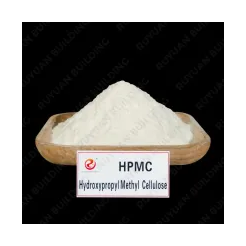Sodium Hydroxide
Sodium hydroxide, the chemical formula is NaOH, commonly known as caustic soda, caustic soda, caustic soda, is a strong caustic alkali, generally flake or granular form, easily soluble in water (dissolved in water when the heat is released) and form an alkaline solution, and delixing, easy to absorb water vapor in the air (delixing) and carbon dioxide (metamorphism).
Product Description
Sodium hydroxide, the chemical formula is NaOH, commonly known as caustic soda, caustic soda, caustic soda, is a strong caustic alkali, generally flake or granular form, easily soluble in water (dissolved in water when the heat is released) and form an alkaline solution, and delixing, easy to absorb water vapor in the air (delixing) and carbon dioxide (metamorphism).
NaOH is one of the essential chemicals in the chemistry laboratory and is also one of the common chemicals. Pure products are colorless transparent crystals. Density 2.130g/cm³. Melting point 318.4℃. Boiling point 1390℃. Industrial products contain small amounts of sodium chloride and sodium carbonate, which are white opaque crystals. There are blocky, flake, granular and rod-like. Formula 40.01 Sodium hydroxide can be used as an alkaline cleaning agent in water treatment, soluble in ethanol and glycerol, insoluble in propyl alcohol and ether. It also corrodes sodium carbon at high temperatures. It disproportionates with halogens such as chlorine, bromine and iodine, and neutralizes with acids to form salt and water.
Foreign name: Sodium hydroxide
Chemical formula: NaOH
Molecular weight: 40.01
Chemical category: inorganic strong base
Regulated or not: Yes
Melting point: 318 °C (591 K)
Boiling point: 1388 °C (1663 K)
Other name: caustic soda, caustic soda, caustic soda, Kos
Water solubility: 111 g (20 ℃)
Molecular weight: 39.9971
Density: 2.130 g/cm³
CAS login number: 1310-73-2
Shape: flake or grain
EINECS entry number: 215-185-5
Flash point: 176-178℃
Safety: Corrosive
Hazard symbol: 36/38-35-34
Dangerous Goods Transport Code: UN 1824 8/PG 2
Acid base: strong base
Basic introduction
Sodium hydroxide, the chemical formula is NaOH, commonly known as caustic soda, caustic soda, caustic soda, when dissolved gives off the smell of ammonia, is a strong caustic alkali, generally flake or particle form, easily soluble in water (dissolved in water when heat) and form an alkaline solution, and delixing, easy to absorb water vapor in the air (delixing) and carbon dioxide (metamorphism). NaOH is one of the essential chemicals in the chemistry laboratory and is also one of the common chemicals. Pure products are colorless transparent crystals. Density 2.130g/cm³. Melting point 318.4℃. Boiling point 1390℃. Industrial products contain small amounts of sodium chloride and sodium carbonate, which are white opaque crystals. There are blocky, flake, granular and rod-like. Formula 40.01
Sodium hydroxide can be used as alkaline cleaning agent in water treatment, soluble in ethanol and glycerol; Insoluble in propyl alcohol and ether. It also corrodes sodium carbon at high temperatures. Disproportionation reaction occurs with halogens such as chlorine, bromine and iodine. Neutralize with acids to form salt and water.
Physical property
Sodium hydroxide is a white translucent crystalline solid. Its aqueous solution is astringent and greasy.
hygroscopicity
It deliquesces easily in air.
hydroscopicity
Solid alkali is very hygroscopic, exposed to the air, absorbs water molecules in the air, and finally completely dissolves into a solution, but liquid sodium hydroxide has no hygroscopic property.
solubility
It is highly soluble in water and emits a large amount of heat when dissolved. Soluble in ethanol and glycerin.
Main use
Sodium hydroxide (NaOH) has many uses. It is used in paper making, soap, dye, rayon, aluminum making, petroleum refining, cotton finishing, coal tar product purification, and food processing, wood processing and machinery industry.
Storage and transportation
Solid sodium hydroxide packed in 0.5 mm thick steel drums tightly sealed, the net weight of each barrel does not exceed 100 kg; Plastic bag or two layer kraft paper bag with full opening or middle opening steel drum; Threaded glass bottles, iron lid pressed glass bottles, plastic bottles or metal barrels (cans) outside ordinary wooden cases; Threaded glass bottles, plastic bottles or tinned sheet steel barrels (cans) with soleplate lattice boxes, fiberboard boxes or plywood boxes; Tinned steel drum (can), metal drum (can), plastic bottle or metal hose outer corrugated carton. Packaging containers should be complete, sealed, and clearly marked "corrosive goods".
For railway transportation, steel drum packaging can be transported by open car. The packing should be complete and the loading should be secure. During transportation, ensure that the container does not leak, collapse, fall, or damage, moisture-proof and rainproof. If the packaging container is found to rust, break, hole, melt water and other phenomena, should immediately replace the packaging or early delivery for use, container damage can be repaired by tin welding. It is strictly prohibited to mix with inflammable or combustible materials, acids, edible chemicals, etc. Transportation vehicles should be equipped with leakage emergency treatment equipment during transportation.

Email: snowmeltingagent@gmail.com
Mob.: +86 156 0216 3890
Mob.: +86 136 2983 3915
Whatsapp: +8615602163890
Add.: Room 8313-4-1, 3rd Floor, Yufang Hailian Office Building, No. 1 Indian Ocean Road, West Coast Comprehensive Free Trade Zone, Qingdao, China (Shandong) Pilot Free Trade Zone







